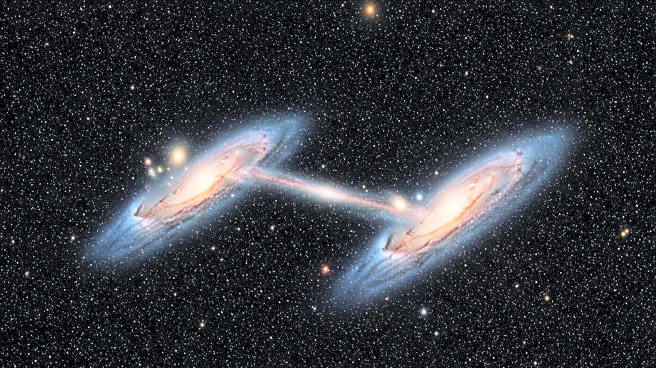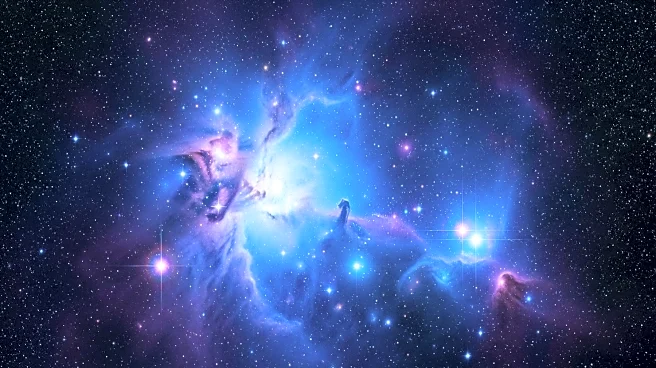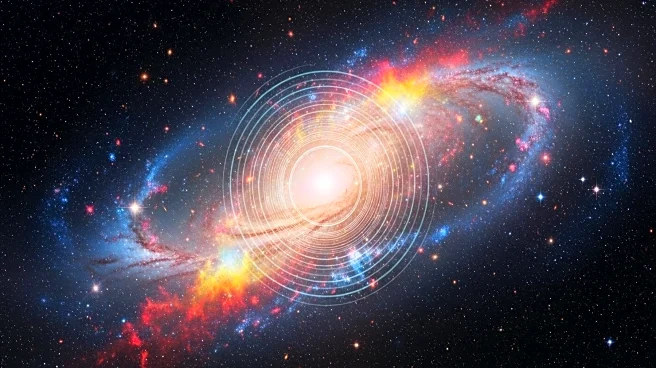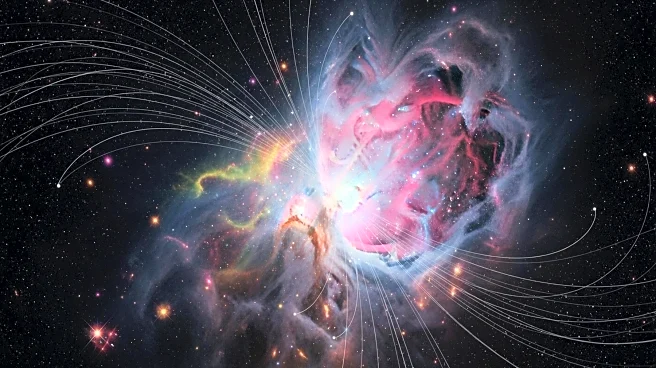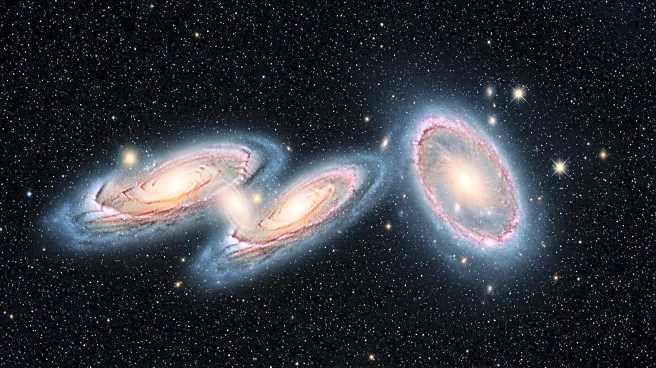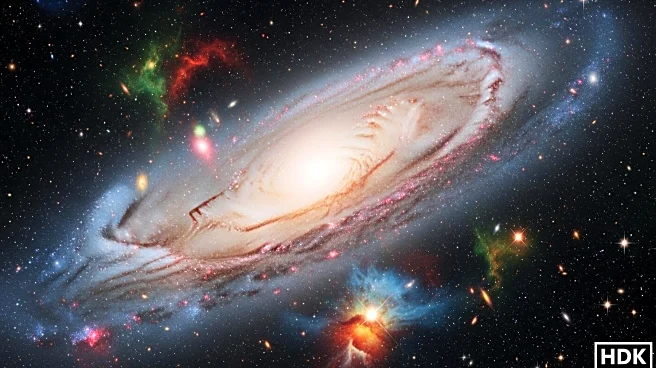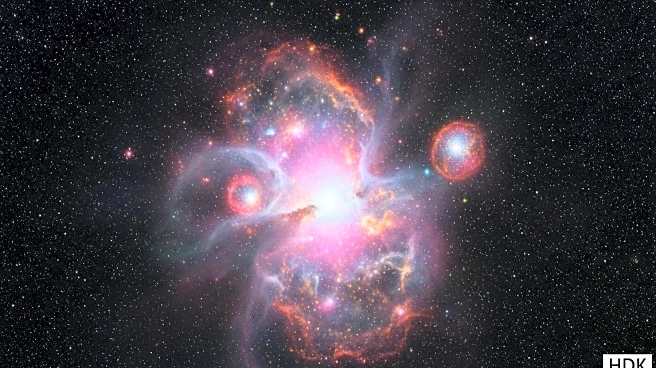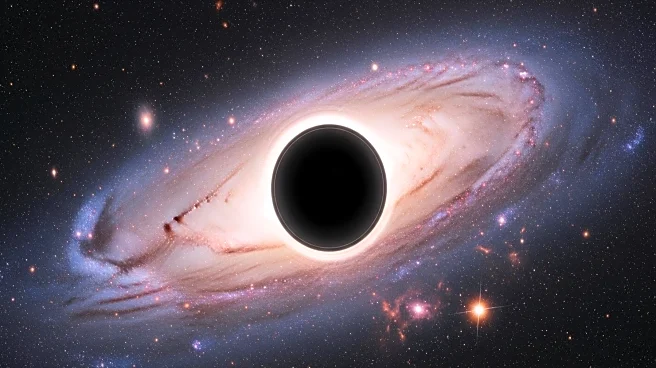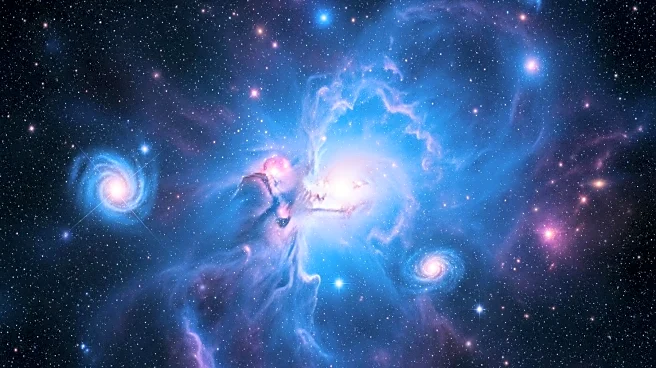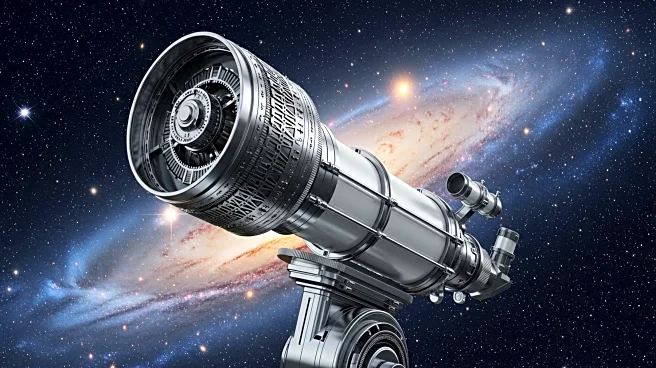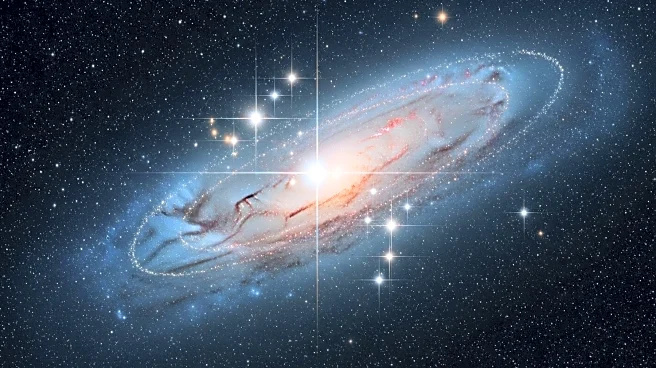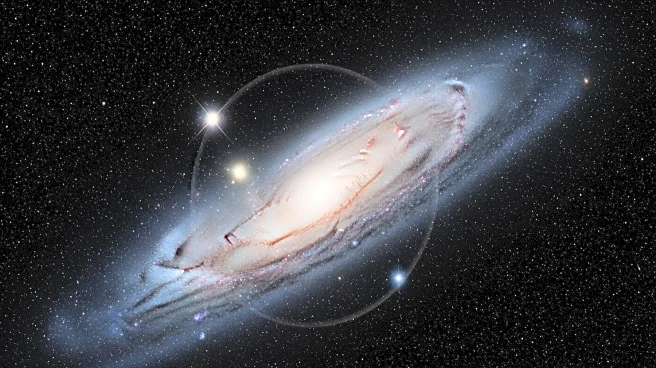What is the story about?
What's Happening?
Astronomers have identified a massive gas bridge connecting two galaxies, NGC 4532 and DDO 137, located on the outskirts of the Virgo Cluster. This discovery was made using radio maps that trace invisible, cold hydrogen gas. The bridge, along with a tail extending 185,000 light-years, is the longest such structure ever observed. The study, led by Professor Lister Staveley-Smith, reveals that tidal forces between the galaxies and their proximity to the Virgo Cluster play a crucial role in the observed gas dynamics. As the galaxies move toward the cluster, they experience ram pressure, stripping and heating the gas, which contributes to the formation of the bridge and tail.
Why It's Important?
The discovery of the gas bridge is significant as it provides insight into how galaxies interact and evolve within clusters. The presence of such structures indicates that galaxies can be influenced by cluster environments even when not located in the core. This interaction affects the distribution of gas, which is essential for star formation. Understanding these dynamics helps astronomers predict how galaxies will change over time and contributes to the broader knowledge of cosmic evolution. The findings also offer a test case for studying the effects of tidal forces and ram pressure on galaxy morphology.
What's Next?
Future research may focus on observing similar structures in other galaxy clusters to determine if this phenomenon is widespread. Additionally, astronomers might explore the potential for star formation within the gas bridge and tail, as seen in nearby systems like the Magellanic Clouds. Continued study of the Virgo Cluster could reveal more about the interactions between galaxies and their environments, potentially leading to new models of galaxy evolution.
Beyond the Headlines
The discovery highlights the importance of radio astronomy in uncovering hidden structures in the universe. It also raises questions about the long-term fate of galaxies as they fall into clusters, potentially leading to mergers or significant morphological changes. The study underscores the complex interplay between gravitational forces and environmental factors in shaping the universe.
AI Generated Content
Do you find this article useful?
